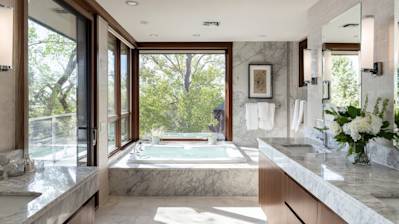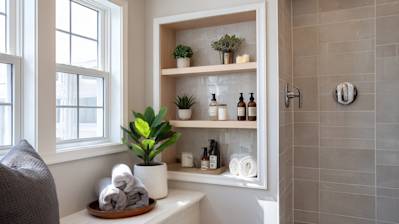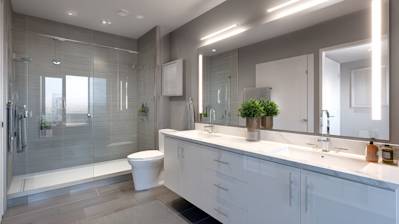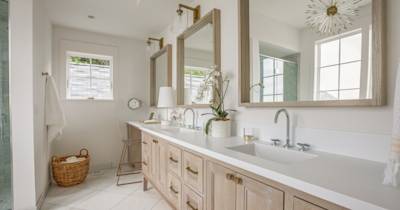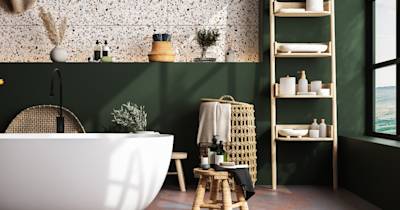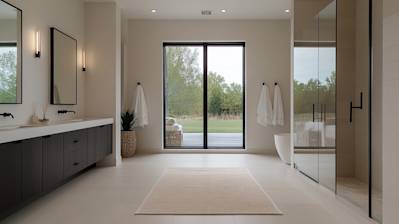Optimal Bathroom Vanity Height: A Guide to Perfect Ergonomics
By Roman Yefim
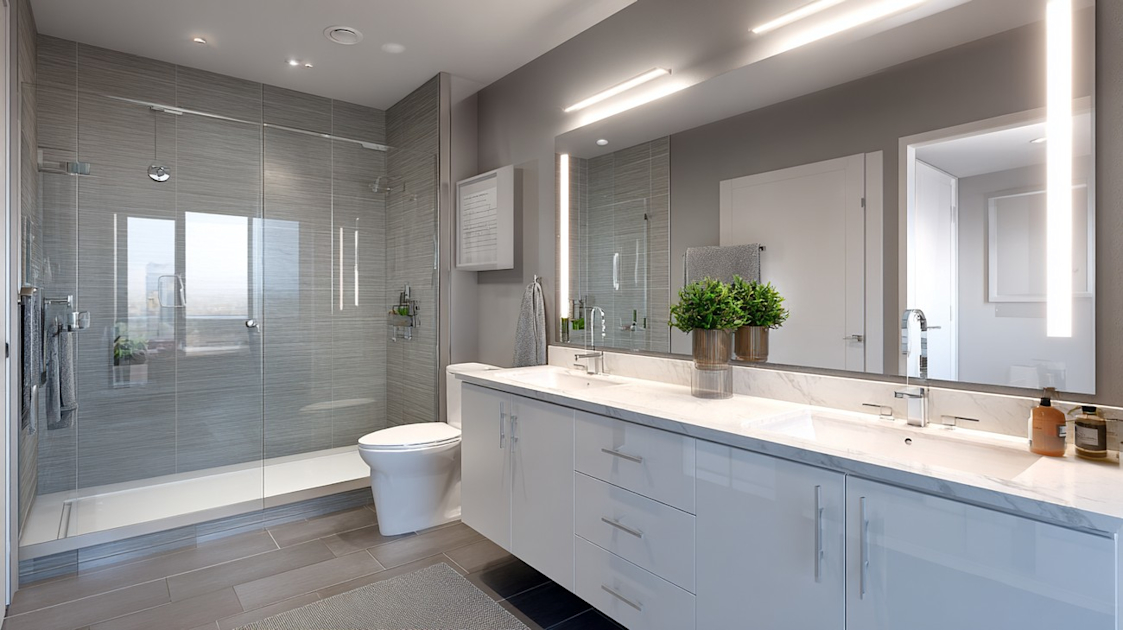
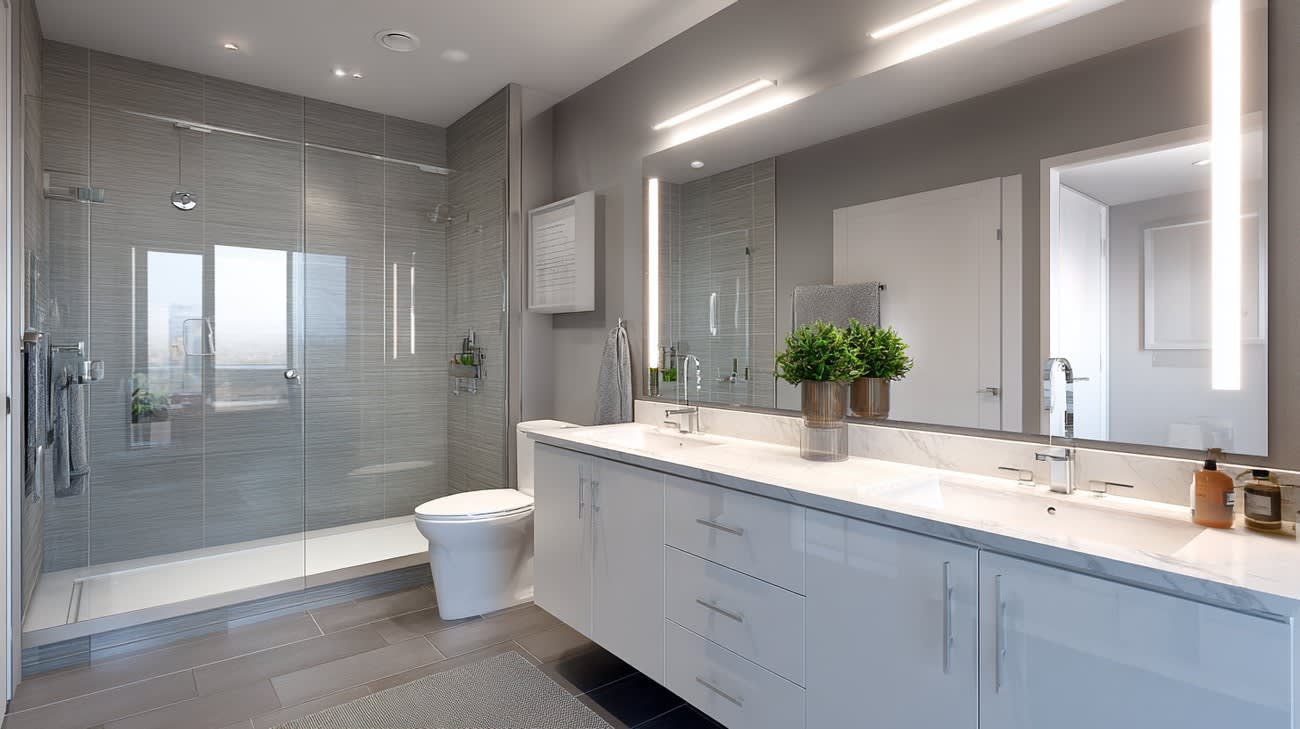
Share —
Choosing the right bathroom vanity height can make a significant difference in both the functionality and aesthetic of your bathroom space. An appropriate vanity height ensures comfort, accessibility, and can even enhance the overall design of your bathroom. Whether you're renovating an existing bathroom or designing a new one, understanding the nuances of vanity height is crucial. Let's delve into everything you need to know about selecting the right height for your bathroom vanity.
Standard Bathroom Vanity Heights
Most vanities fall into the category of standard heights, which are designed to accommodate most adult users. However, there are several variations catering to different needs and preferences.
Traditional Heights
Traditionally, the height of a bathroom vanity ranges from 30 to 32 inches. This measurement considers the vanity without the countertop included. When countertops are added, the overall height generally increases by about 1 to 2 inches, bringing it to approximately 31 to 34 inches.
These traditional heights are often found in older homes, and they promote easy use for both adults and children. However, the trend in more recent years has been shifting towards higher vanities to reduce bending.
Comfort or Comfort-Height Vanities
As with many elements in the home, comfort also plays a critical role in the choice of vanity height. Comfort-height vanities have become increasingly popular, standing at around 34 to 36 inches tall, similar to the height of a standard kitchen countertop.
These vanities cater especially well to taller individuals and align more closely with the size and height of a modern adult. In designs that embrace comfort height, the strain on the back is minimized, and everyday tasks such as brushing teeth or washing hands become more comfortable.
Custom Vanity Heights
While standard and comfort bathroom vanity heights cover the needs of most individuals, custom vanity heights can offer a tailored solution for specific users and settings.
Customization for Accessibility
In homes where accessibility is a primary concern, customized vanity heights can be a great solution. For example, a bathroom vanity designed for wheelchair users might have an altered height, generally about 24 to 27 inches, and incorporate a design that allows for knee space. It’s essential that these vanities are installed with both functionality and safety as top priorities to facilitate ease of use for those with disabilities.
Kid-Friendly Heights
For family bathrooms that cater primarily to children, incorporating vanities that are lower than the standard 30 inches can be beneficial. A vanity height of around 26 to 28 inches can make a significant difference in accommodating young children. This lower height enables them to access the sink independently, fostering independence and making daily routines easier for everyone in the household.
Material Influences on Height
The materials used in vanity construction can affect overall height and design decisions, as some materials might require specific structural support or attention.
Countertop Considerations
Different countertop materials can affect the final installed height of the vanity. For example, materials like granite or marble might require a thicker foundation or support, subsequently raising the height of the vanity. Additionally, a vessel sink might add a few inches onto the height of the vanity. Therefore, when selecting materials, it’s vital to account for their impact on the total vanity height.
Cabinet Styles
Certain cabinet styles, such as those with added feet or higher kickboards, can change the overall height of the vanity. Floating vanities, which provide a contemporary look, are often mounted at various heights depending on the desired aesthetic and function, adding another layer of customization to vanity height considerations.
Style and Design Impact
A vanity's height is not solely a practical consideration but can greatly impact the style and design of your bathroom.
Modern Design Trends
In seeking a sleek and modern appearance, many homeowners opt for floating vanities that seem to 'hover' above the floor, offering an adjustable height tailored to their specific aesthetic or functional needs. This minimalist style has been a growing trend, allowing for more personalized configurations.
Traditional Design Influence
In more traditional designs, vanity height might align more closely with other classic elements of the home. Traditional vanities feature ornate detailing and robust structures, often aligning with the 30 to 32 inches standard height but allowing for additional design features like backsplashes or extended countertops.
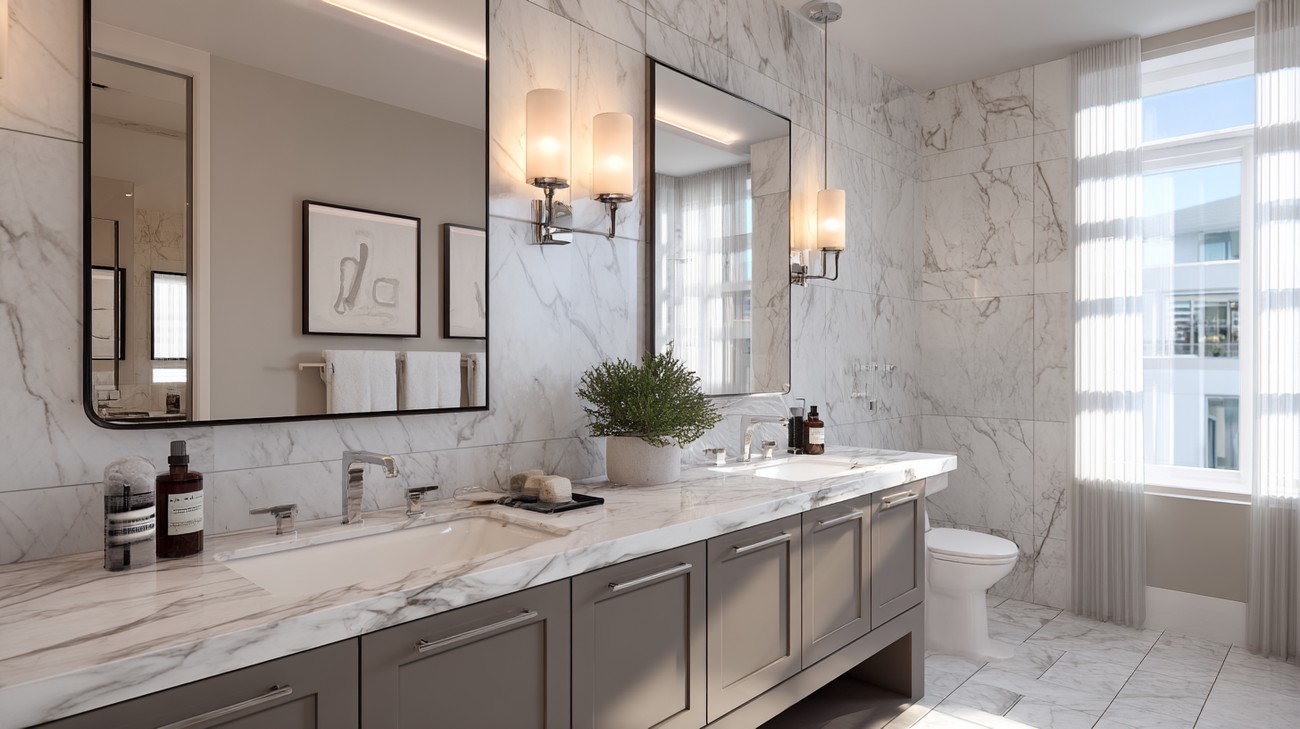
Frequently Asked Questions about Bathroom Vanity Height
What is the Standard Bathroom Vanity Height?
Typically, the standard bathroom vanity height is about 32 inches tall. However, this can vary depending on the manufacturer. This height is convenient for most people, but it’s always a good idea to consider who will be using the vanity the most. If children are the primary users, a lower vanity might be better.
How Does Comfort Height Differ from Standard Vanity Height?
Comfort height vanities, sometimes referred to as "adult height," are generally 34 to 36 inches tall. This is closer to the typical kitchen countertop height and is designed to reduce strain on your back and neck during use. These vanities cater to an adult user base, making them a popular choice in modern homes.
What Height is Suitable for Kids’ Bathroom Vanities?
For a child’s bathroom, look for vanities that are around 30 inches high or even less, depending on the child’s age and height. Another option is to choose adjustable or modular bathroom furniture that can evolve as your child grows.
Can Bathroom Vanity Height Affect Counter Space Usage?
Absolutely! A higher vanity can offer more counter space as it often allows for deeper counters, providing more surface area for everyday items. However, ensure that the extra height doesn’t lead to uncomfortable stretching or strain when using the sink or reaching for items.
Are There ADA Standards for Vanity Height?
Yes, the Americans with Disabilities Act (ADA) has guidelines suggesting that the top of the lavatory should not exceed 34 inches in height to accommodate users of different abilities. This height allows for accessibility while not compromising on style and design.
How Does Sink Style Influence Vanity Height?
The choice of sink type can significantly impact vanity height requirements. With vessel sinks, which sit on top of the counter, you'll need a lower vanity height to ensure the rim of the sink isn't too high to use comfortably. Conversely, under-mount or integrated sink styles allow for more traditional vanity heights.
Is Customizing Bathroom Vanity Height Worth It?
Customizing your vanity height is definitely worth considering if you have specific needs or design preferences. While standard height suits many, personalization can lead to increased comfort and usability tailored to your household. Just remember, custom installations can incur higher costs and might take more time.
Can Adjustable Vanities Solve Height Challenges?
Yes, adjustable vanities are an innovative solution for those dealing with height challenges. These units can be modified after installation to find that perfect fit for your family. Though they might be more expensive, they offer flexibility and adaptability to evolving needs.
What Should I Consider When Selecting Bathroom Vanity Height for a Family?
When choosing a vanity for a family bathroom, think about the average height of household members. In shared spaces, you might want to consider a dual-height vanity or one with sections adjusted for both taller and shorter users. Remember to factor in any future changes like children growing or aging in place.
Does Bathroom Vanity Height Impact Design Aesthetics?
Yes, vanity height can significantly influence the overall aesthetic of your bathroom. A higher vanity can create a sense of elegance and modern design, while lower vanities often lend themselves to more traditional styles. Consider the visual balance in the room, ensuring fixtures and surrounding elements complement the vanity’s height.
What Are The Latest Trends in Bathroom Vanity Heights?
Recent trends have seen comfort height vanities gain popularity, aligning with the desire for ergonomic solutions. Floating vanities, which offer a sleek, modern look with adjustable height perceptions, are also trending. These can be mounted at your preferred height, providing a contemporary touch while remaining functional for varying needs.

Pros
Ergonomics and Comfort
User-Friendly for Taller Individuals
One of the biggest advantages of having a higher bathroom vanity is the ergonomic comfort it provides to taller individuals. Standard vanities are often around 30 inches, while comfort-height vanities can be elevated to about 36 inches. This allows taller users to perform daily tasks, like brushing teeth or washing hands, without having to stoop awkwardly, thereby reducing back strain and increasing overall comfort.
Accessibility for People with Mobility Issues
A higher vanity can sometimes serve as a support structure for those with mobility difficulties, offering something sturdy to lean against during daily routines. While not designed explicitly for this purpose, the extra height can reduce the amount of bending required, making it less taxing for individuals with joint issues or reduced mobility.
Aesthetic Appeal
Modern Look
Raised vanities often lend a more contemporary and upscale look to a bathroom. Many people enjoy the visual appeal of a taller vanity as it tends to exude a sense of luxury and modernity. These vanities are often paired with sleek, modern fixtures and vessel sinks, which add to the overall aesthetic appeal.
Increased Storage Options
The extra height in a bathroom vanity often leads to increased storage capacity. Taller cabinets allow for additional shelving or larger drawers, which can accommodate toiletries, towels, and other bathroom essentials more efficiently. This is particularly beneficial in smaller bathrooms where space is at a premium, allowing for better organization and decluttering.
Cons
Accessibility Issues
Challenges for Shorter Individuals and Children
One of the major drawbacks of a higher vanity is its lack of accessibility for shorter individuals and young children. A taller vanity can make it difficult for them to reach the sink comfortably, leading to potential inconvenience and even the necessity of additional steps or stools, which can clutter the space and pose a safety hazard.
Difficulties for People with Disabilities
While the increased height might aid some individuals with mobility challenges, it can hinder accessibility for wheelchair users. A standard-height vanity might allow a person in a wheelchair to reach the sink easily, whereas a higher vanity could make this increasingly difficult, thereby reducing inclusivity.
Installation and Cost
More Complex Installation
Installing a higher bathroom vanity can be more complex as it may require adjustments to existing plumbing. Aligning the height with current plumbing fixtures can lead to additional labor and costs. This complexity is a disadvantage, especially during renovations or upgrades where budget constraints are in place.
Potential for Higher Costs
Taller vanities are often considered specialty items and may come with a higher price tag. Add in the potential extra installation costs and adjustments to fit existing plumbing, and the overall expense can escalate. This makes them less financially attractive for budget-conscious homeowners or those working on large-scale renovations.
Aesthetic and Space Concerns
Overpowering Smaller Spaces
In a smaller bathroom, a taller vanity can feel overbearing or out of place. The increased height may dominate the room's aesthetic, making the space feel cramped or unbalanced. This might not fit well with the overall design cohesion or the desired look of a minimalist or traditionally styled bathroom.
Style Limitations
While the modern, sleek look is appealing to many, a taller vanity may not suit more traditional or rustic bathroom décors. This could limit style options for homeowners seeking a specific look or those who might want to change their bathroom theme in the future but are restricted by the dominant style of a taller vanity.

Myths / Misconceptions
When it comes to the topic of bathroom vanity height, numerous myths and misconceptions often muddy the waters. From one-size-fits-all beliefs to misunderstanding standard dimensions and accessibility, these misconceptions can lead to less-than-ideal choices when it comes to designing or renovating a bathroom space.
Myth: One Standard Height Fits All
The idea that all bathroom vanities are, or should be, of the same height is one of the most pervasive myths.
Misconception: All Vanities Are 30 Inches High
Many people believe that all bathroom vanities are supposed to have a standard height of 30 inches from the floor. While this was indeed the traditional standard for many years, it's not a hard-and-fast rule. In reality, vanity heights can vary significantly based on design, purpose, and personal preference.
Misunderstanding Modern Trends
More contemporary designs often feature higher vanity heights, sometimes even 36 inches, to accommodate varying user needs and improve comfort. This elevation is often referred to as "comfort height," aligning more closely with modern countertop heights in kitchens and other parts of the home.
Myth: Vanity Height Doesn't Affect Usage
Another false belief is that the height of the bathroom vanity has negligible impact on its functionality.
Neglecting Ergonomics
Ergonomics play a crucial role in bathroom design, and vanity height is a significant factor. A vanity that is too low can cause straining, bending, and discomfort for taller individuals, whereas a vanity that is too high may be inconvenient for shorter people or children.
Overlooking Accessibility Needs
Particularly in homes where accessibility is a concern, such as those with elderly family members or users with mobility challenges, the right vanity height can make a world of difference. Adapting vanity height for accessibility needs, for example by ensuring it complies with ADA (Americans with Disabilities Act) guidelines, can greatly enhance the utility and comfort of the space.
Myth: Custom Heights Are Not Necessary
There's also a common belief that opting for non-standard or custom vanity heights is an unnecessary extravagance.
Valuing Personal Preference
It's essential to acknowledge that customization allows for personal preferences and individualized needs, which helps create a more functional and pleasant environment. Custom heights can be particularly beneficial in multi-user households with significant height differences among family members.
Enhancing Aesthetic Harmony
Sometimes, the rest of a bathroom's architectural style demands a specific vanity height to maintain aesthetic harmony and coherence. Custom heights allow for such detailed design choices, improving the overall cohesiveness of the space.
Myth: Vanity Height is Solely About Function
Many people assume vanity height is solely a functional decision, without realizing the impact it can have on other aspects of bathroom design.
Overlooking Style and Proportion
While function is a significant aspect, the visual appeal and proportional balance of a bathroom can be enhanced or diminished by vanity height. A vanity that is too short for a room with high ceilings may look out of place, while varying the heights can break up monotonous lines and add interest.
Contributing to Storage Solutions
The height of a vanity isn't just about where the sink sits; it also influences storage capacity and design. Taller vanities often offer more space below, which can be crucial for storage solutions in smaller bathrooms.
Myth: Height is the Same for All Vanity Types
There's also a misconception that the appropriate height is consistent across all types of vanities, regardless of design and installation type.
Floating Vanities vs. Freestanding
Floating vanities, which are wall-mounted and can be installed at varying heights, offer flexible customization options that differ significantly from freestanding models. The same fixed standard does not apply here, and the buyer’s needs can be increasingly catered to.
Impact of Vessel Sinks
Vanities designed for vessel sinks, which sit on top of the countertop, require lower base heights to ensure the overall sink height remains functional and comfortable.
By debunking these myths and understanding that bathroom vanity height is a multifaceted decision, homeowners and designers can make more informed choices that enhance both the functionality and aesthetic appeal of a bathroom. This opens up a world of design opportunities that can be tailored to the specific needs and preferences of the user.
Summary
So, when you're thinking about bathroom vanity height, it's all about what suits your needs and style best. Whether you go for the traditional height or the taller, more modern options, it's important to consider who will be using it the most. After all, everyone wants to be comfortable in the bathroom, right? While trends come and go, your personal comfort and the functionality of the space should always be top priority.
To sum up the whole bathroom vanity height thing, it's more personal than you'd think. Tall people might appreciate a counter that's a bit higher so they don't have to hunch over. On the other hand, if you have kids using the bathroom or just prefer a more classic look, a standard height might be your go-to. It's all about making your bathroom work for you and ensuring everything's just the right fit for your family's daily routine.
At the end of the day, talking about bathroom vanity height is just one piece of the puzzle when designing your bathroom. It's like the perfect pair of jeans—what fits one person perfectly might not be so great for someone else. When you're picking out your vanity, think about how it'll match with everything else you've got going on in your room, and don't be afraid to break the mold if you find something that feels right for you.
About New Day Construction
Welcome to New Day Construction, your trusted partner in transforming spaces in and around Kirkland, WA. We're not just about bricks and mortar; we're about building dreams and crafting spaces that resonate with your lifestyle. Our team of experienced professionals is dedicated to delivering high-quality construction services with a personal touch, ensuring that every project reflects our commitment to excellence and your unique vision. Whether it’s a custom home, a remodel, or a commercial build-out, we pride ourselves on our detailed craftsmanship and transparent process. Let’s create something amazing together – because every project marks the start of a New Day.

